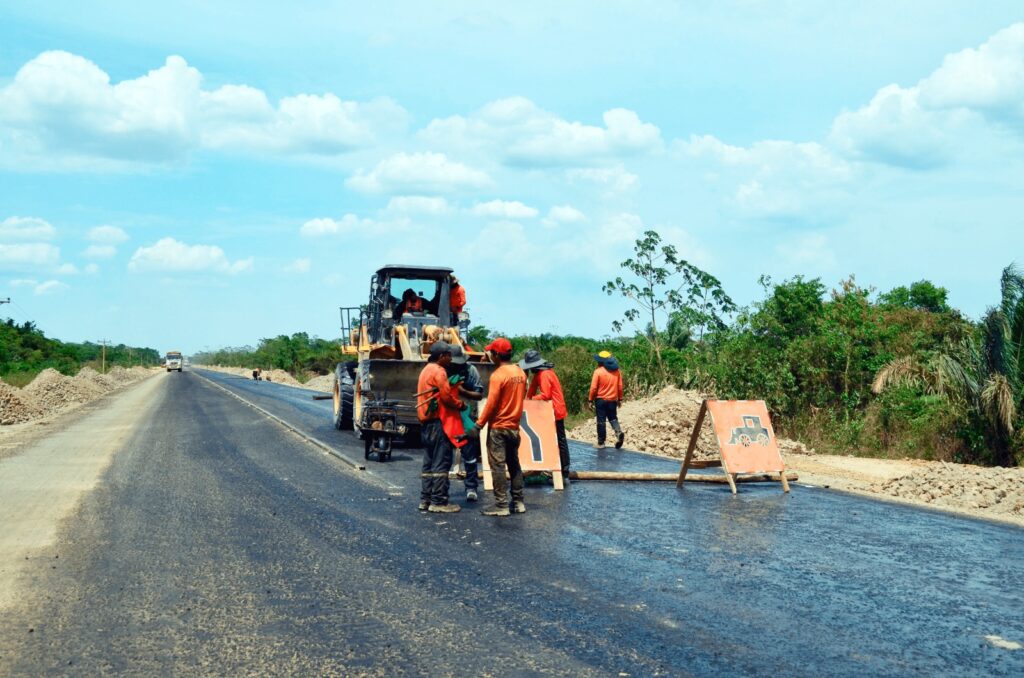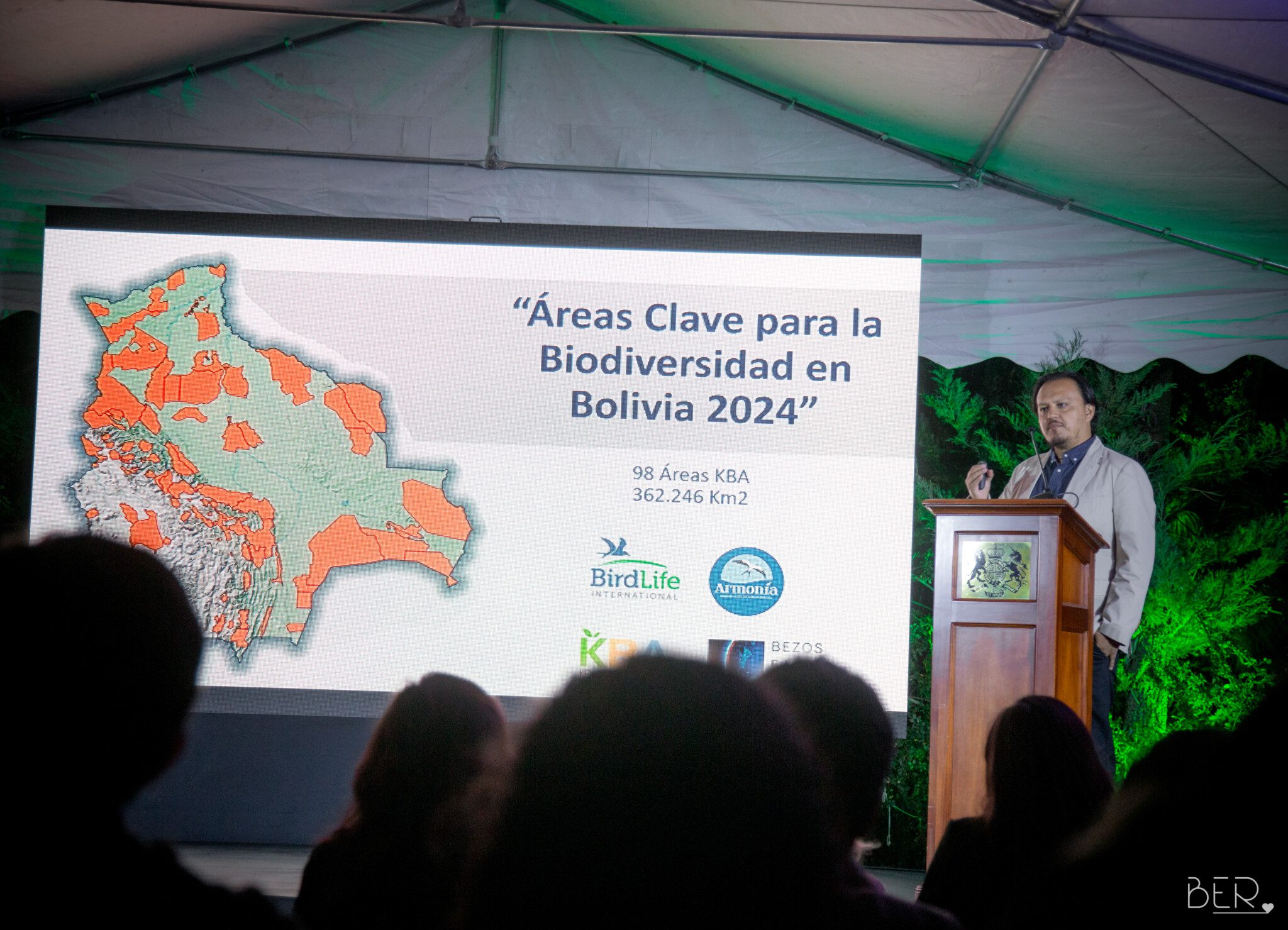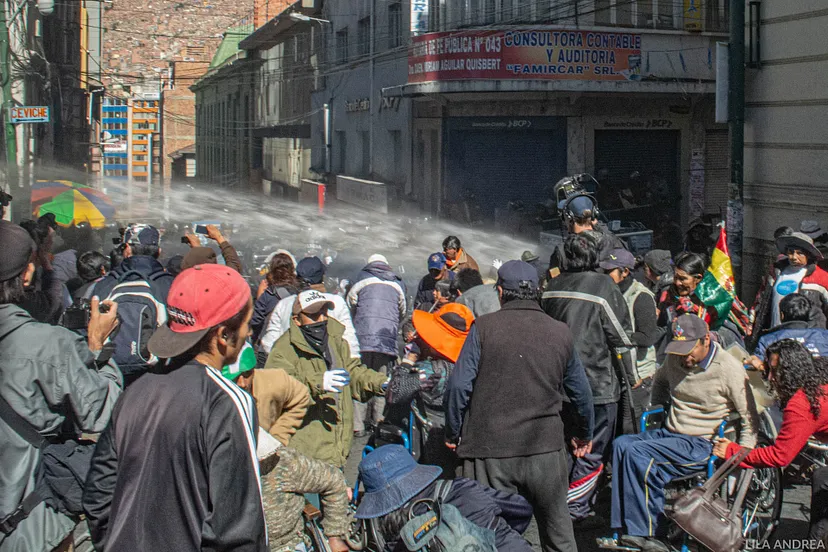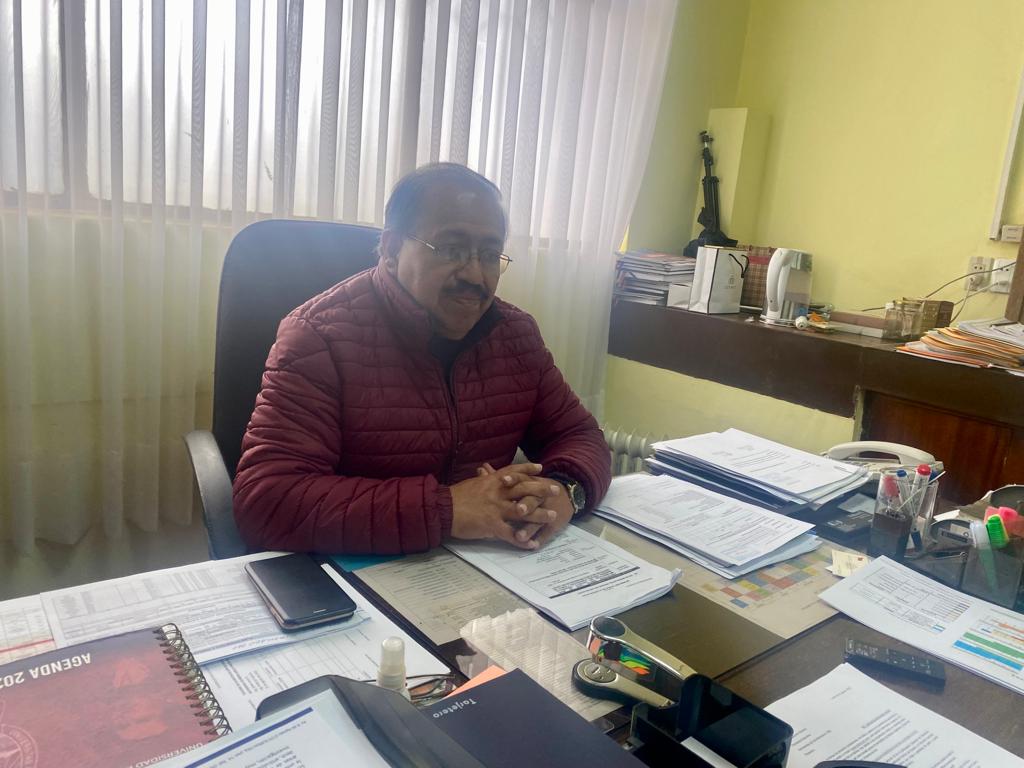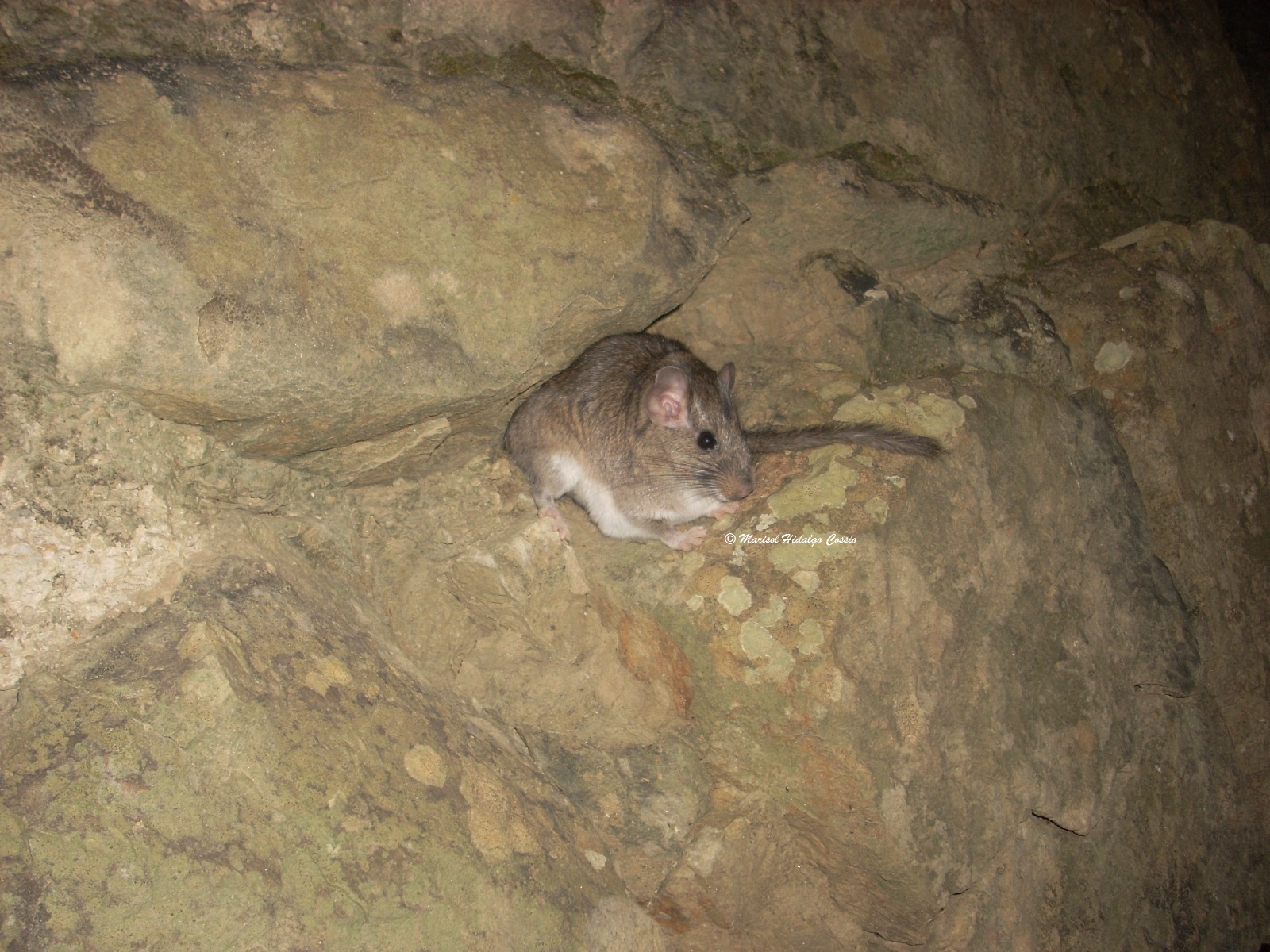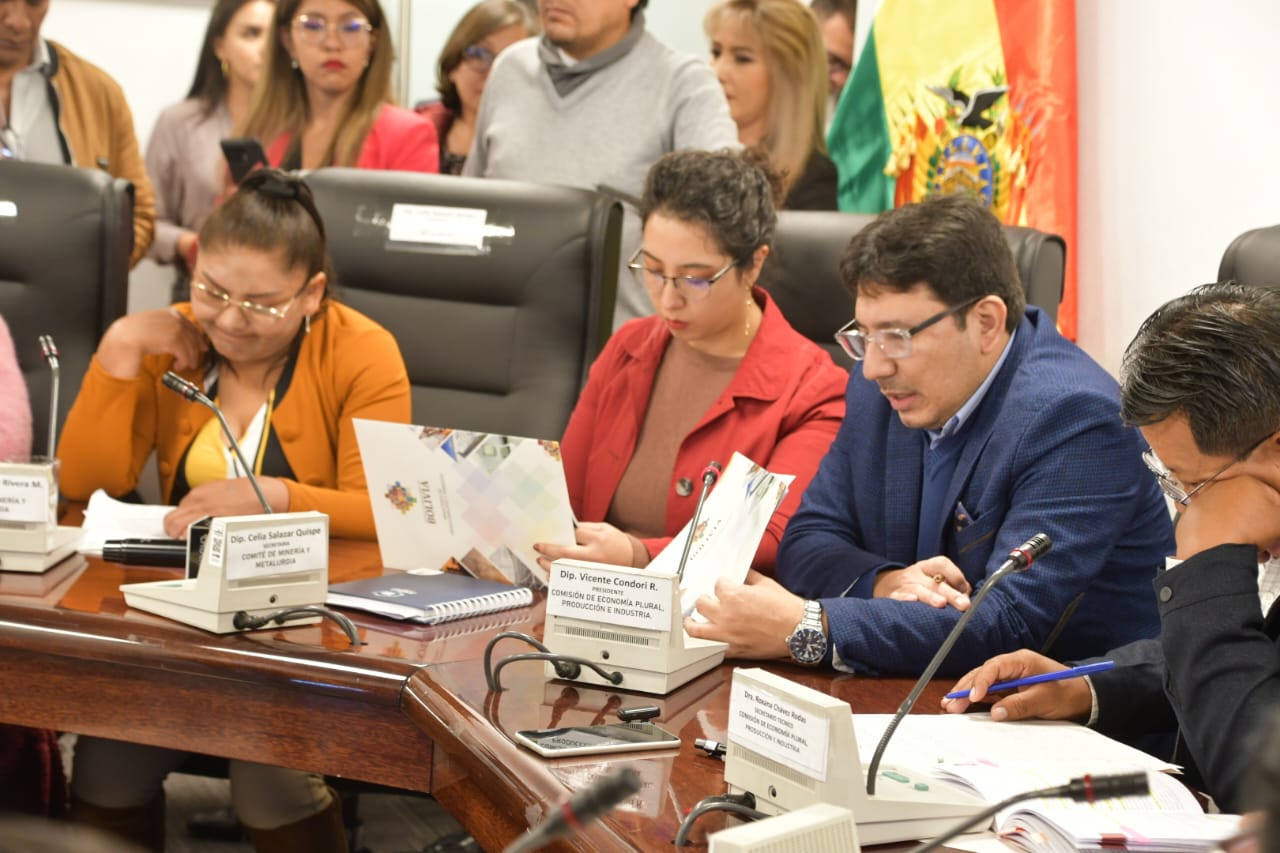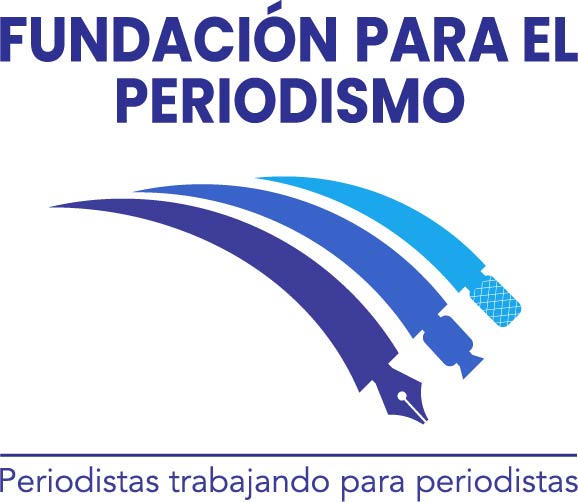Photographs: Sergio Mendoza
It was Monday October 6, 1986, when 75 adults and three babies, mounted on 12 vehicles, received the blessing of the parish priest of Riberalta to embark on an epic journey across the Bolivian Amazon plain to the cold Andes Mountains. The Benianos, people from that region, rode along stretches with no roads at all, through trails and mud-marked paths. After five days and 950 kilometers traveled, the retinue arrived at La Paz and caused a singular commotion. The Local Council declared them «Illustrious Guests». The Senate asked the Prefecture to declare a «Day of Departmental Rejoicing» so that the people of La Paz could congregate in the Villarroel square, in the north of the city, to wait for the caravan. The Lower Chamber programmed welcoming acts and a dinner in travelers’ honor.
On Friday October 10 that year, the Benianos arrived at the main square and entered the Palacio Quemado to talk directly with the President of the Republic, Víctor Paz Estenssoro. Their main demand: to integrate Beni with La Paz through a highway to Riberalta.
More than 37 years have passed since that trip and now the longed-for road will be completely paved. The work is nearing completion and is expected to be delivered in early 2024. Although this region already had a dirt road, it is expected that this modern highway will allow the transit of high tonnage trucks and connect not only Beni with La Paz, but also two oceans: the Atlantic and the Pacific, and will mainly favor the agro-industrial sectors that seek to expand their production and move it to Asian and European markets in an expeditious manner.
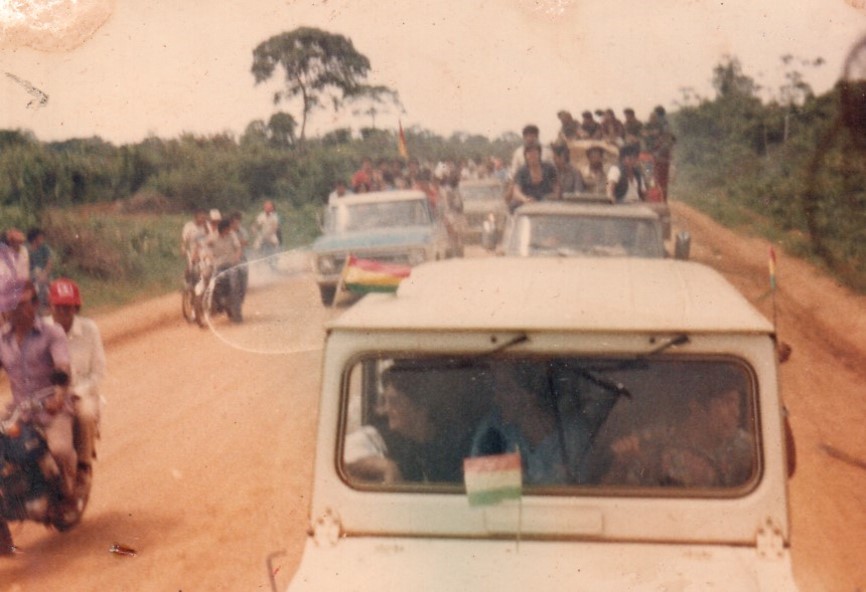
Researchers and local residents fear that the legitimate demand of that 1986 caravan will be used to favor business groups with an economic model that will further deforest the Amazon. Added to this is the unknown impact that this mega-project (considered the longest highway in Bolivia) will have on the environment, and the secrecy of the agreement bewteen the Bolivian government and China to build the Rurrenabaque – Riberalta highway.
«With the road so high the flooding will come and we will lose the animals.»
El Cozar was founded in 1920 on the stretch between Rurrenabaque and Reyes. A little more than 73 families live there. One of them is Ricardo Yumani, the vice-president of this community, a wrinkled 70-year-old man with a wispy mustache, greasy shirt and gray hair. He spent all his years in this place of sandy soil and leafy trees that is 11 kilometers from where the Beni River passes. A great distance that, they assure, is nothing for the water, which in the rainy season usually floods the community. The villagers remember well what happened in 2014. By then, the dirt road was barely one meter high and the water broke through it. Animals died, crops were ruined and the villagers set up tents on the higher parts of the road that dried out earlier, waiting for the water to disappear.
Now the road is up to six meters high, they say, I estimate about three. Either way, it has become a dam holding back the flow of water. «Now that it is so high, the flood will come and we will lose the animals. We want culverts and canals for the water, not these pipes that will be clogged with mud. But the company ignores us, they say there is no budget,» complains Yumani.
Concern is widespread. In August 2023, indigenous Cavineños blocked the highway in protest because its construction caused the flooding of their roads and interrupted the flow of fresh water from the streams. Sandro Vaca Cartagena, leader of the Cavineño Indigenous Territory, also said that his territory was left without connection to the road, built without considering that his communities do not have access to populated centers such as Riberalta.
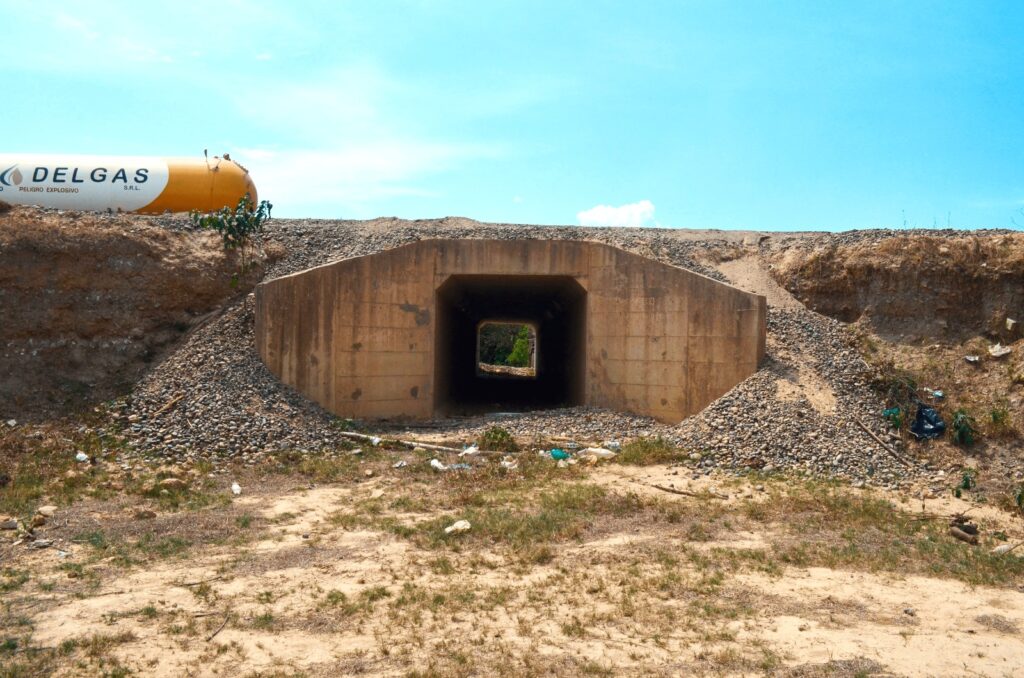
Near the camp of the company that is carrying out the work, China Railway Construction Corporation (International) Limited, or CRCC, one of the Cozar community members who works preparing asphalt says: «We were very enthusiastic about the road at the time. We longed for a road that was not made of dirt. But the project was brought to us like that, they didn’t even show it to us».
CRCC was awarded the work by direct invitation in August 2014. The amount was agreed at US$ 579 million, more than double what was initially planned when it was intended that a Brazilian company would take over. China lent $492.4 million through Eximbank and the rest ($115.8 million) was committed by the Governor’s Office of Beni.
The contract does not appear in the State Contracting System (SICOES). The conditions of the Chinese loan remain unknown, according to road infrastructure researcher and civil engineer Silvia Molina, who followed up on the work.
With the negative track record of Chinese companies in road construction and the lack of transparency, «there is only hope that this one will work», says Héctor Roca, Secretary of Planning of the Mayor’s Office of Riberalta.
The senator of Beni, Fernando Vaca, assures that the control and monitoring of the work was left in the hands of the ABC since 2016. «The ABC cannot be judge and party and we have asked for the supervision to be reinstated».
Up to the time of publication of this report, neither the ABC, nor the Ministry of Public Works, provided information requested for this story An attempt was also made to talk to a CRCC representative in Bolivia, but to no avail.
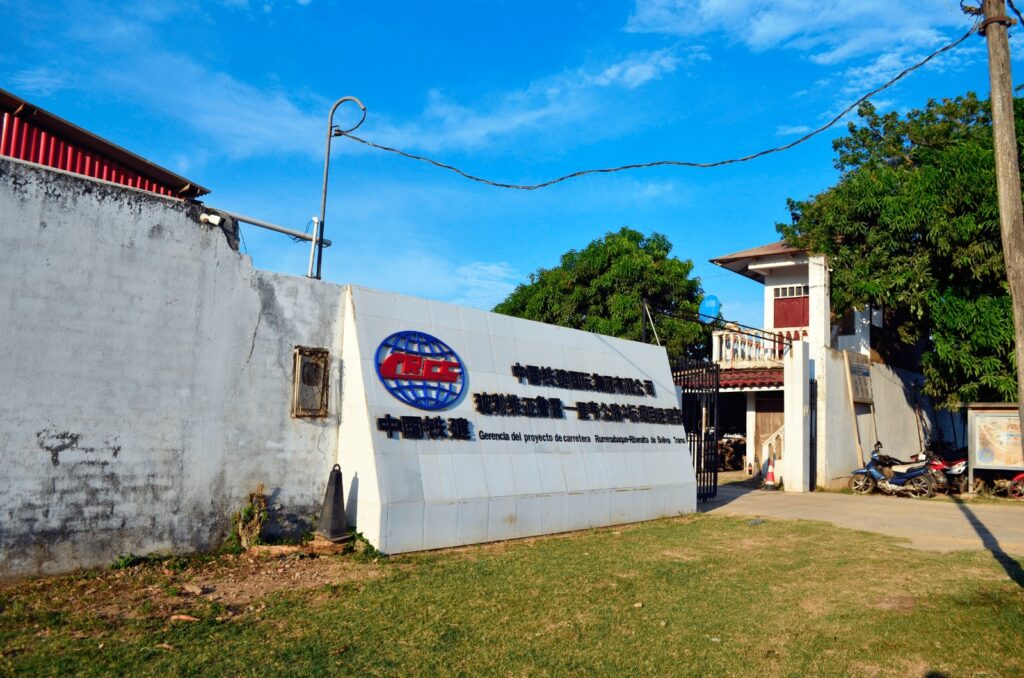
Who does it favor?
Where the Beni and Madre de Dios rivers meet, right in front of Pando, there is Riberalta. A city of about 100,000 inhabitants that preserves its Amazonian essence, with paved streets and hundreds of motorcycles, the preferred means of transportation. The main square is right in front of the wide river that meanders for several kilometers towards Brazil. It is home to forestry researcher Vincent Vos, a 48-year-old Dutchman who has been in Bolivia for more than two decades, where he arrived to participate in a forest management program and was captivated by the woman who is now his wife.
His house is full of fruit trees and ornamental plants. Mango, custard apple, cacao, achachairú, carambola, papaya, pepper, and other extravagant fruits often attract birds and other animals. He has a small dog named Brutus and a cat that took possession of the place after making a bad third with a couple of cats that used to live there.
With concern, Vos warns that the Rurrebanaque – Riberalta highway is part of a widely known plan: The «March to the North», which will mainly benefit large national and foreign businessmen (mainly Brazilians) who aim to expand agribusiness and livestock in the Amazon and connect the Atlantic and Pacific oceans to transport their production to Asia and Europe. There are at least three routes that will open up the Amazon from the south, as a trident to expand «development» in the world’s most important rainforest. In addition to the Rurrenabaque – Riberalta route, there is the San Buenaventura – Cobija route, and the Trinidad – Guayaramerín route.
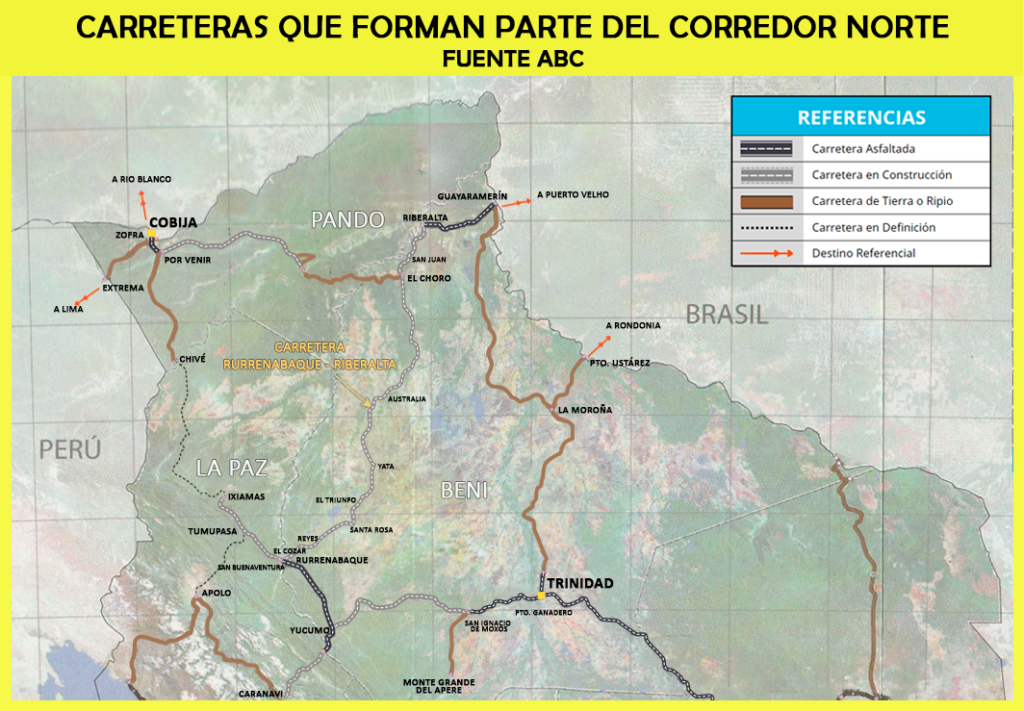
«This is the government’s plan. It has been seen with the sugar crops in San Buenaventura, with its intention to grow crops for biodiesel», says the researcher.
Silvia Molina shares this position and indicates that the demand for integration of the local populations is being taken advantage of to create a bioceanic corridor for international trade. I tell her that at the end of the day, a large or small highway benefits the population equally. But she argues that the size of the work varies in cost and completion time. Thus, what would have been cheaper and faster to do is replaced by something more expensive and that will take longer, postponing the urgent needs of some to favor the business of others.
The truth is that this highway was born as a connection to link Brazil with the Pacific. This was announced at the meeting held by the presidents of Brazil, Venezuela and Bolivia (Lula, Chávez and Evo) in 2008, in Riberalta. A governmental statement emphasized that the route will allow the connection of Brazil with Asian ports to export «agricultural products», thus avoiding the Panama Canal.
A 2014 Bank Information Center (BIC) publication states that the «Northern Corridor», of which the Rurrenabaque-Riberalta highway is part, «has been initially prioritized by Brazil with the objective of expanding the soybean agricultural frontier and having a safe, fast, cost and time reducing route for agribusiness products from the Brazilian state of Rondonia on their journey to Pacific ports.»
Senator Vaca does not fully agree with these positions and affirms that the 508 km road is the conclusion of the 1986 demand. Although he does not believe that the work responds to the interests of business groups, he admits that the asphalted road could be used by agribusiness and cattle ranching to expand deforestation in the Amazon. In this sense, Vaca sees the road as an instrument with which to promote a sustainable economy with products such as cocoa, Brazil nuts, açaí, fish farming, and others; but also as a weapon that can devastate nature.
«It is clear that the one who benefits most from the road now is Brazil, which in Rondonia has cleared everything to grow soybeans and cattle,» says Vaca, who thinks about the dangers of this economic model expanding to the Beni soils. «As long as we do not look at the Amazon with its own potential, the future is uncertain. The government has a very short-term vision, it wants monocultures here, and the fires we see are consequences of this. They are taking advantage of the roads; but the road itself is not the problem».
Héctor Roca, Secretary of Planning of the Mayor’s Office of Riberalta, fears that the population «will see the big exports from a stage because the highway is more for big companies, for monsters in other words».
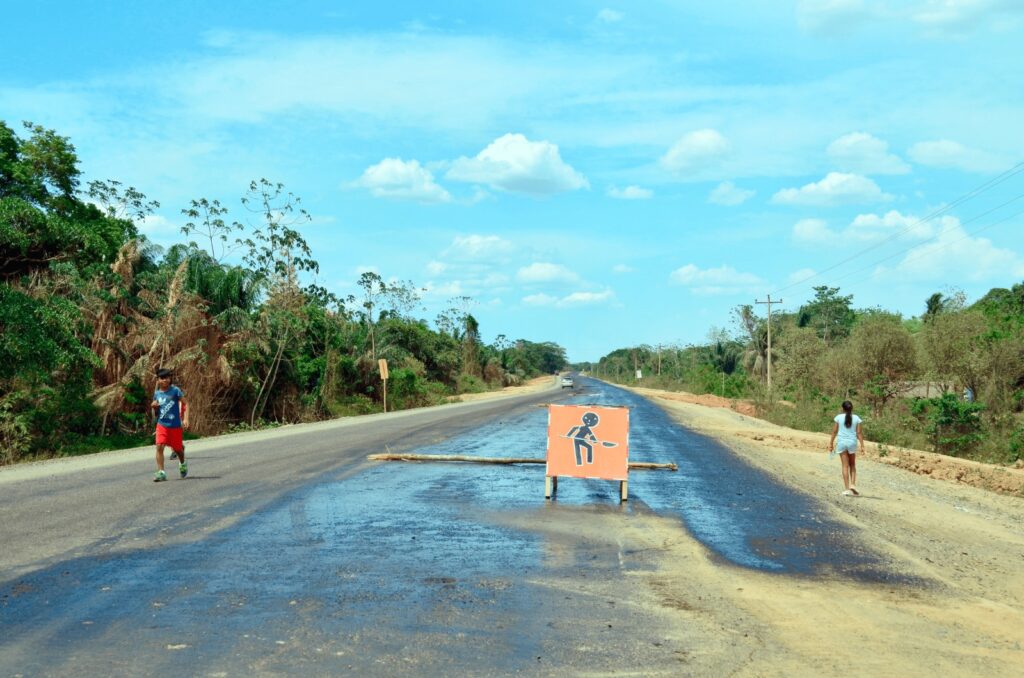
Environmental impact
There is no doubt that the longest highway in the Bolivian Amazon will cause great damage to the environment. Biologists and environmentalists such as Juan Carlos Catari and Heinz Arno Drawert warn that water flows will be altered, affecting flora and fauna. The consequences can hardly be quantified, but the bodies of capybaras, snakes and lizards can already be seen running over the asphalt, as well as deforestation around the road due to new human settlements.
Environmental impact studies and mitigation plans for the construction of this project are not easy to find. I requested them from the ABC and the Ministry of Public Works, as well as other information for this report, but did not receive a response.
The BIC publication states that the region where the road is being built is part of one of the most important in South America for its cultural and biological richness and diversity. The project will degrade soils and water quality, alter the water regime, cause loss of vegetation, and impact fauna and protected areas. It will also promote the expansion of the agricultural frontier, land appropriation by businessmen, and the displacement and impoverishment of indigenous communities.
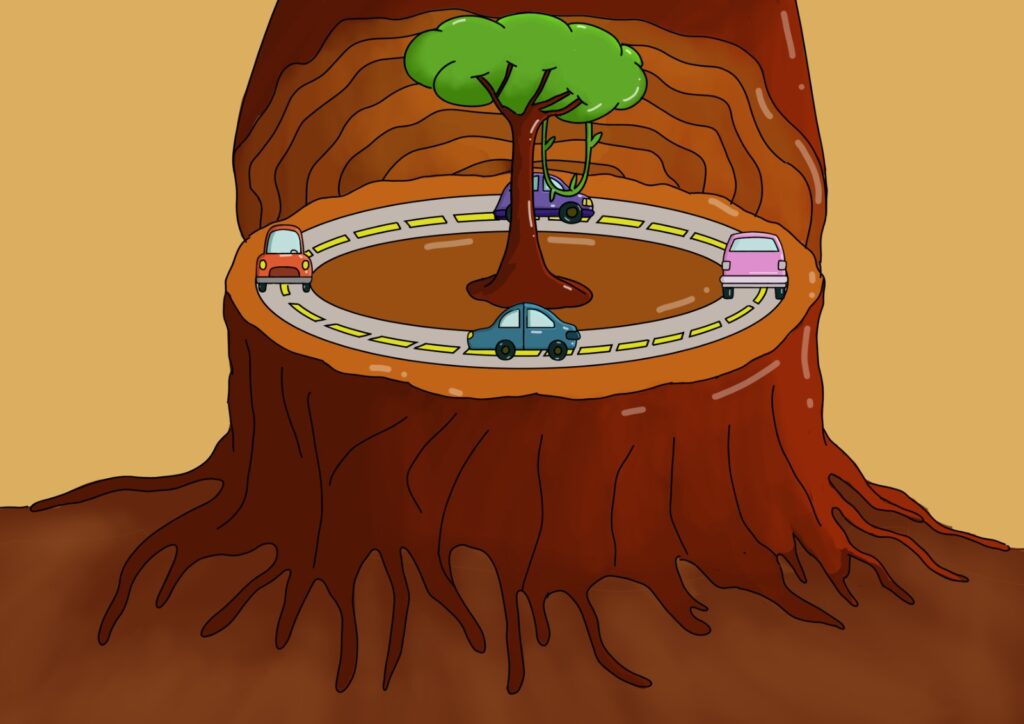
Government assures development
Although my attempts to talk to someone from the ABC and the Ministry of Public Works were unsuccessful, I was able to ask Minister Édgar Montaño a few questions at a press conference about concerns that the project will benefit powerful groups to the detriment of local populations.
«This is a highway that link’s the Atlantic Ocean with the Pacific, and obviously the advantages are for both countries (Brazil and Bolivia). We have to export to the Atlantic, to old Europe, lithium, exotic products such as almonds. Brazil needs to go to the other extreme, to Asia, to take soybeans, sunflower, corn», said Montaño, and added that the idea is to benefit «our producers and to boost the production of some sectors that have been forgotten for a long time».
I was also able to talk to Sergio Ibañez, social specialist of CRCC, the Chinese company building the road. The official said that the road was raised as much as possible because the area tends to flood and that everything possible is being done for the benefit of the communities within the budget, which cannot be modified.
Time will tell
For forestry engineer Vincent Vos, the future of the Bolivian Amazon and the use of this road and others will depend on the country’s vision of economic development. Historically, a predatory extractivism has prevailed in Bolivia, subsidized and strengthened by government policies, instead of sustainable development models.
«Historically, Bolivia has been subjected to extractivism and plundering by foreign countries. This should not be repeated and we must look for endogenous models that respond to the needs of the local population. Ideally, roads should serve those interests,» says Vos.
Eloy Cartagena, the president of the Indigenous Central of the Amazon Region of Bolivia (CIRABO), is hopeful that the road will bring progress to the region, but he is also aware that it may generate conflicts and forest destruction. «Only time will tell,» he comments from Riberalta.

